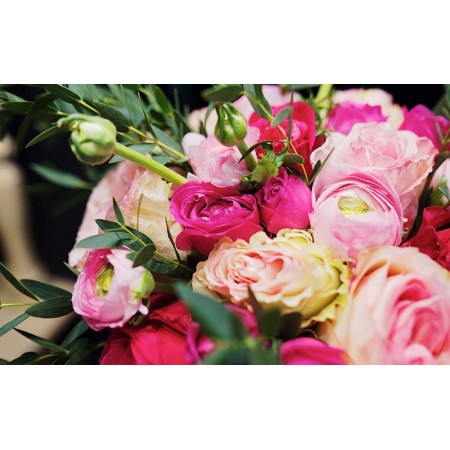Bouquets with different number of flowers

Every adult knows that it is necessary to give bouquets to loved ones with bouquets with an odd number of flowers, as compositions with an even number bring exclusively to the funeral. But where did this tradition come from and what caused it?
History of the origin of the tradition
There are several options for the first appearance of the opinion that an even number of flowers in a bouquet brings bad luck. According to one version, the tradition has pre-Christian roots - it’s not for nothing that we still say that “trouble never comes alone.” The second variant of the appearance of opinion is associated with the ancient Japanese culture, where the hieroglyph denoting the number “four” was very similar to another hieroglyph - “death”.
True, the Japanese themselves do not agree with this, they prefer to bring white flowers to the funeral and farewell of their loved ones, symbolizing grief and sorrow. The most common varieties for such bouquets are chrysanthemums and lotuses, while composing compositions with different numbers of colors.
By the way, the Japanese have two other funny traditions related to flowers: the patient in the clinic is given to give bouquets without pots (plants with roots they associate with the desire to stay here for a long time), and for the wedding they just give compositions in containers or pots as a wish for a long family life.
Meaning of bouquets of different number of colors in it
Modern florists specify that if there are more than ten flowers in the bouquet, it doesn’t matter whether they are even or odd. On the other hand, if you want to know how bouquets with different numbers of flowers can be impressed, here you can list the following points:
one flower symbolizes that the donor considers the addressee to be an exceptional and unique person;
- two flowers signify affection and value of relations between two people;
- three flowers, as a rule, symbolize respect and affection;
- five different flowers in the bouquet are a symbol of wishes for prosperity and good luck;
- seven colors (tulips or roses) - this is a classic declaration of love;
- a dozen flowers express admiration for a man;
- twenty flowers (scarlet roses) are the promise of eternal love that is in demand among young couples who have recently entered into a marriage union.
As you can see, a competent choice of the number of colors for a future composition will show the gift recipient that the donor cares not only about the appearance of the bouquet, but also about its interpretation. Not always we can firmly assert that the person we like is not an ardent admirer of the ancient floral traditions. So why not play it safe in advance, and not approach such an important issue of composing a composition with maximum responsibility? This will allow to show respect to the interests of the person, to indicate the importance of the relationship or emphasize the upcoming festive event.